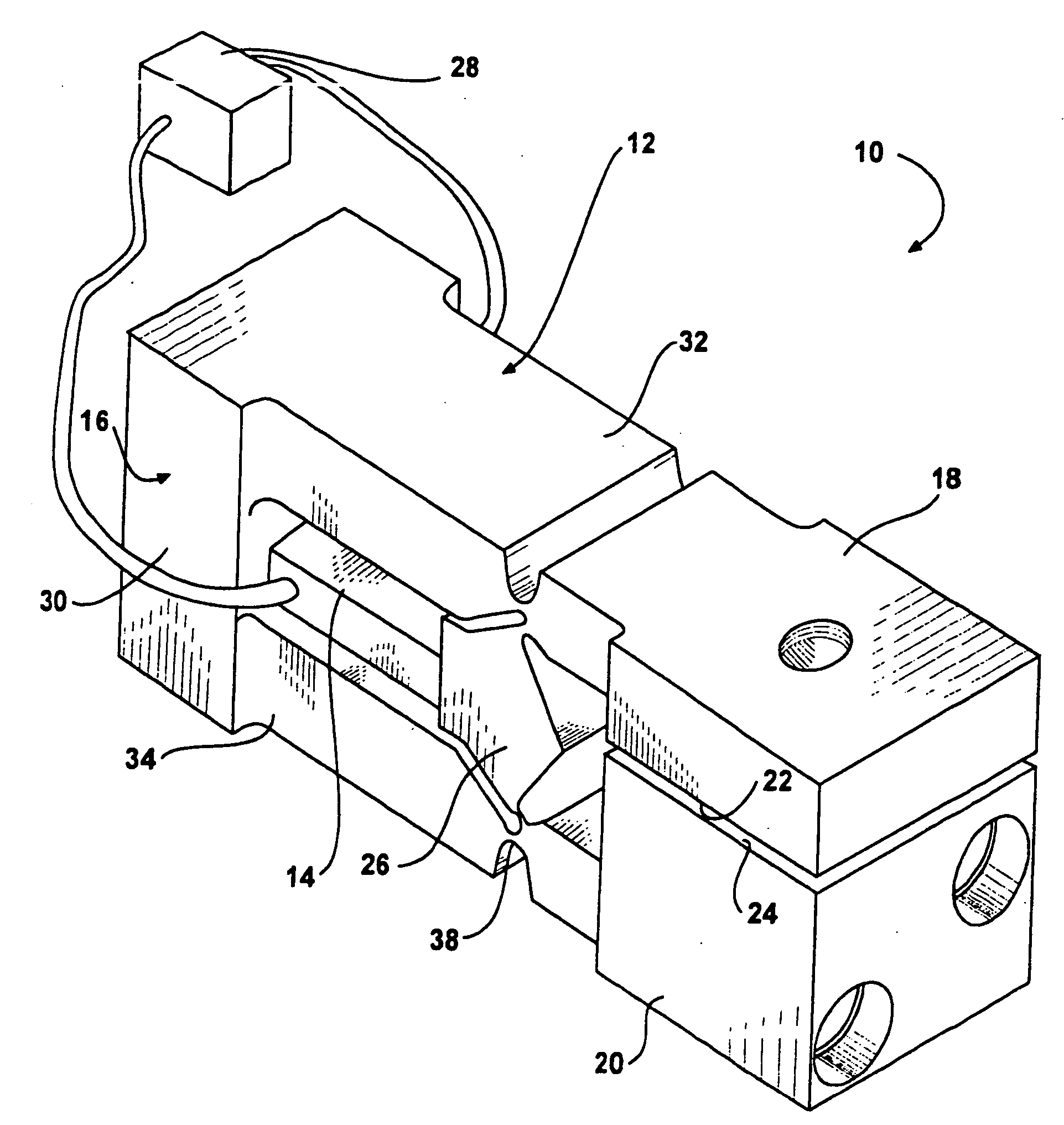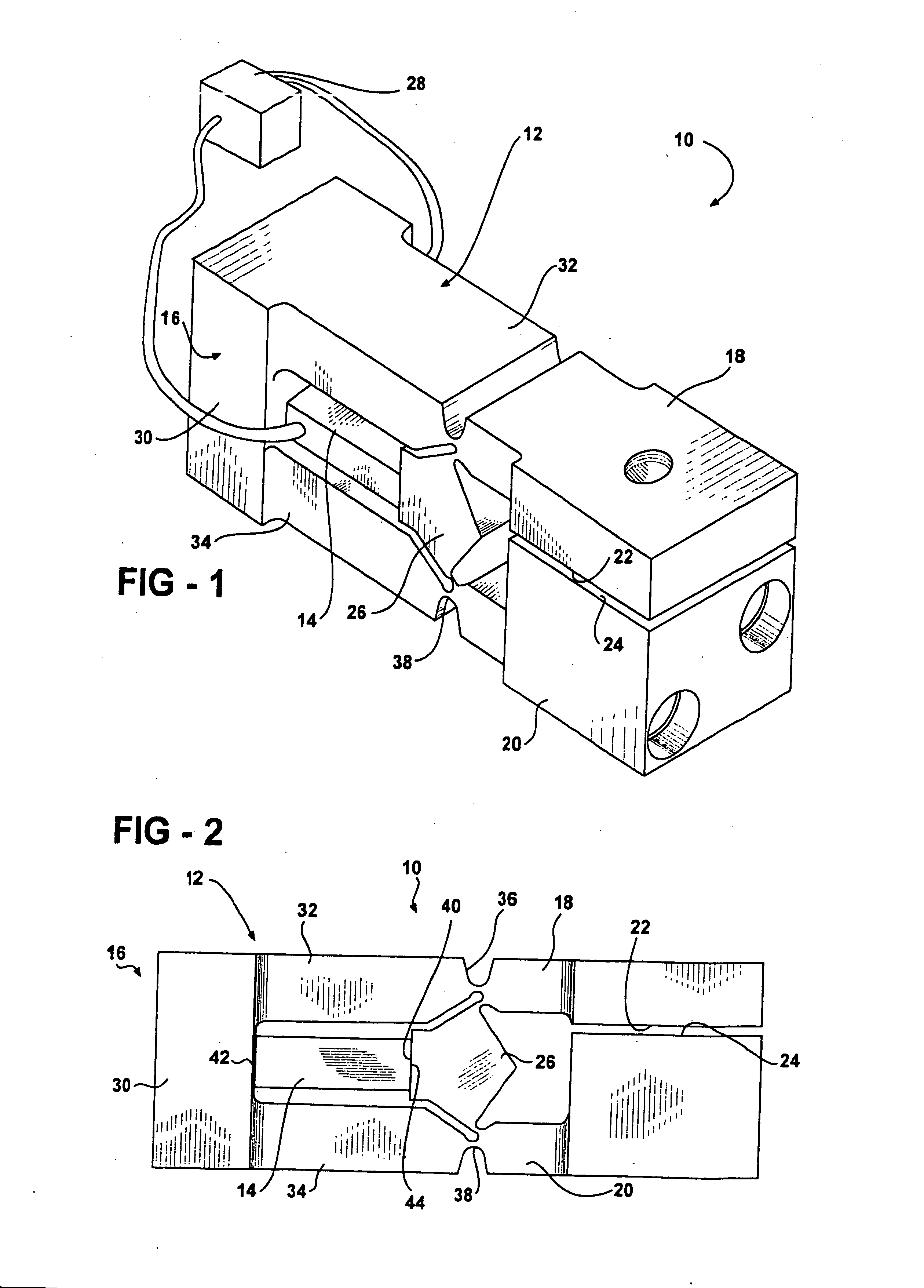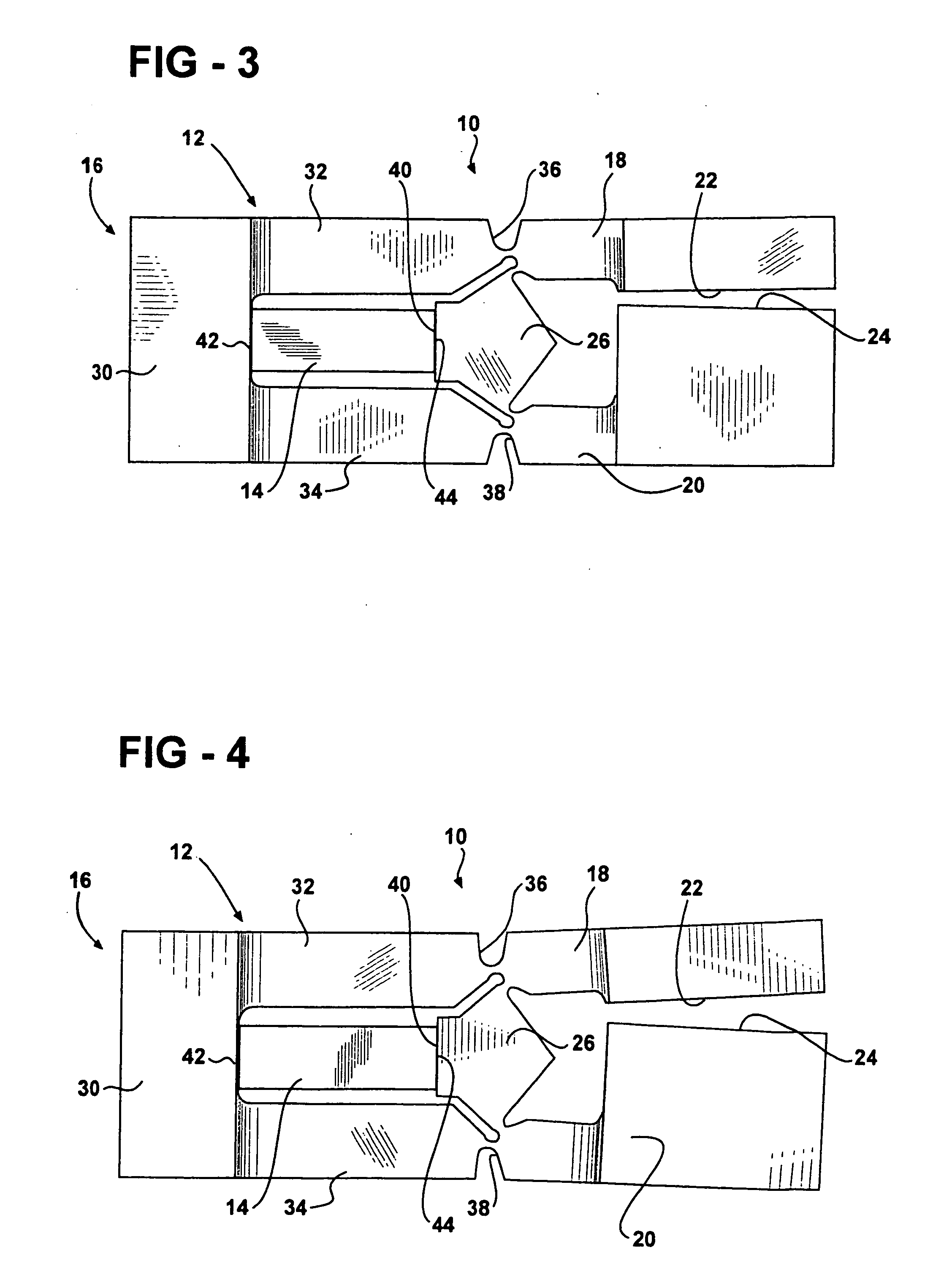Apparatus for moving a pair of opposing surfaces in response to an electrical activation
a technology of opposing surfaces and actuators, which is applied in the direction of piezoelectric/electrostrictive/magnetostrictive devices, device materials, device material selection, etc., can solve the problems of reducing the effective life of the mechanism and reducing the amount of force transferred through the hinge axes, so as to reduce the effective life of the mechanism and reduce the amount of force transferred , the effect of limiting the displacement and force of the pivoting arms
- Summary
- Abstract
- Description
- Claims
- Application Information
AI Technical Summary
Benefits of technology
Problems solved by technology
Method used
Image
Examples
first embodiment
[0022]FIG. 2 is a side view of the apparatus 10. Preferably, the rigid, non-flexing portion 16 of the apparatus 10 is C-shaped including a rigid non-flexing web 30 extending between a pair of rigid non-flexing arm portions 32, 34. At least one pivotable arm portion 18 is pivotably connected via a living integral hinge 36 to one rigid arm portion 32. Another pivotable arm portion 20 can optionally be pivotably connected via a living integral hinge 38 to the other rigid arm portion 34, if two opposing pivotable arms are desired. The force transfer member 26 includes a seat surface 40.
[0023] The actuator 14 includes opposite ends 42 and 44 and, as described above, the actuator 14 produces a controlled spatial displacement between the opposite ends 42 and 44 in response to an electrical activation. One end 42 of the actuator 14, hereinafter referred to as the set or fixed end 42, is disposed adjacent to the rigid web 30. The other end 44 of the actuator 14, referred to hereinafter as th...
second embodiment
[0029]FIG. 5 is the apparatus 10a with the force transfer member 26a having an alternative T-shape. The apparatus 10a includes a support 12a and an actuator 14a similar to that previously described for the other embodiments. The support 12a includes a rigid non-flexing portion 16a, at least one pivotable arm portion 18a, 20a extending from the rigid non-flexing portion 16a, a pair of opposing surfaces 22a, 24a with one opposing surface 22a, 24a on each pivotable arm portion 18a, 20a for movement relative to one another, and a force transfer member 26a operably positioned between the first and second pivotable arm portions 18a, 20a. Preferably, as with the other embodiments the entire support 12a is formed as a unitary, integral, single-piece body. The actuator 14a is operably engaged between the rigid portion 16a and the force transfer member 26a to drive the force transfer member 26a in linear motion away from the rigid web 30. Movement of the force transfer member 26a pivots the f...
third embodiment
[0030]FIG. 6 is the apparatus 10b with an adjustable seat 52b supported by the rigid portion 16b with an adjustable support 54b. The apparatus 10b includes a support 12b and an actuator 14b similar to that previously described for the other embodiments. The support 12b includes a rigid non-flexing portion 16b, at least one pivotable arm portion 18b, 20b extending from the rigid non-flexing portion 16b, a pair of opposing surfaces 22b, 24b with one opposing surface 22b, 24b on each pivotable arm portion 18b, 20b for movement relative to one another, and a force transfer member 26b operably positioned between the first and second pivotable arm portions 18b, 20b. Preferably, as with the other embodiments the entire support 12b is formed as a unitary, integral, single-piece body. The actuator 14b is operably engaged between the rigid portion 16b and the force transfer member 26b to drive the force transfer member 26b in linear motion away from the rigid portion 16b. The rigid portion 16...
PUM
 Login to View More
Login to View More Abstract
Description
Claims
Application Information
 Login to View More
Login to View More - R&D
- Intellectual Property
- Life Sciences
- Materials
- Tech Scout
- Unparalleled Data Quality
- Higher Quality Content
- 60% Fewer Hallucinations
Browse by: Latest US Patents, China's latest patents, Technical Efficacy Thesaurus, Application Domain, Technology Topic, Popular Technical Reports.
© 2025 PatSnap. All rights reserved.Legal|Privacy policy|Modern Slavery Act Transparency Statement|Sitemap|About US| Contact US: help@patsnap.com



